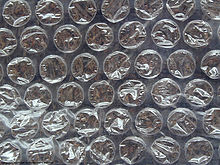
Waxed paper is paper that has been made moisture-proof and grease-proof through the application of wax.

Optical disc packaging is the packaging that accompanies CDs, DVDs, and other formats of optical discs. Most packaging is rigid or semi-rigid and designed to protect the media from scratches and other types of exposure damage.

Shrink wrap, also shrink film, is a material made up of polymer plastic film. When heat is applied, it shrinks tightly over whatever it is covering. Heat can be applied with a handheld heat gun, or the product and film can pass through a heat tunnel on a conveyor.
Dunnage is inexpensive or waste material used to load and secure cargo during transportation; more loosely, it refers to miscellaneous baggage, brought along during travel. The term can also refer to low-priority cargo used to fill out transport capacity which would otherwise ship underweight.

SEE, legally the Sealed Air Corporation, is a packaging company known for its brands: Cryovac food packaging and Bubble Wrap cushioning packaging. Headquartered in Charlotte, North Carolina, United States, Chief Operating Officer Emile Chammas and Chief Financial Officer Dustin Semach currently serve as interim co-President and co-CEO.
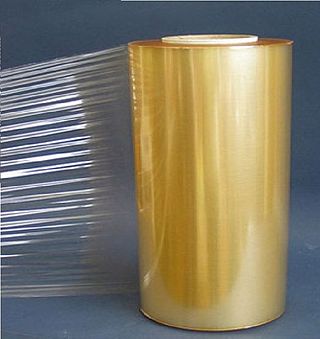
Plastic wrap, cling film, Saran wrap, cling wrap, Glad wrap or food wrap is a thin plastic film typically used for sealing food items in containers to keep them fresh over a longer period of time. Plastic wrap, typically sold on rolls in boxes with a cutting edge, clings to many smooth surfaces and can thus remain tight over the opening of a container without adhesive. Common plastic wrap is roughly 0.0005 inches thick. The trend has been to produce thinner plastic wrap, particularly for household use, so now the majority of brands on shelves around the world are 8, 9 or 10 μm thick.

A blister pack is any of several types of pre-formed plastic packaging used for small consumer goods, foods, and for pharmaceuticals.
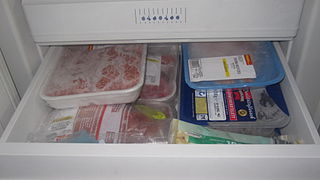
An overwrap or wrap is a method of sealing a contained product, typically as part of retail packaging. It is often made of plastic film or paper. The wrap is applied over the bare product or can be applied over another form of packaging. It is typically used to protect products, but can be used decoratively.

Vacuum packing is a method of packaging that removes air from the package prior to sealing. This method involves placing items in a plastic film package, removing air from inside and sealing the package. Shrink film is sometimes used to have a tight fit to the contents. The intent of vacuum packing is usually to remove oxygen from the container to extend the shelf life of foods and, with flexible package forms, to reduce the volume of the contents and package.

Package cushioning is used to protect items during shipment. Vibration and impact shock during shipment and loading/unloading are controlled by cushioning to reduce the chance of product damage.
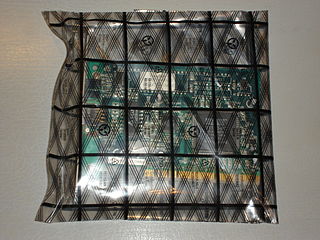
An antistatic bag is a bag used for storing electronic components, which are prone to damage caused by electrostatic discharge (ESD).

Stretch wrap or stretch film, sometimes known as pallet wrap, is a highly stretchable plastic film that is wrapped around items. The elastic recovery keeps the items tightly bound. In contrast, shrink wrap is applied loosely around an item and shrinks tightly with heat. While it is similar to plastic food wrap, it is not usually made of material rated as safe for food contact.

A padded envelope, also known as a padded or cushioned mailer, or jiffy bag in the United Kingdom, is an envelope incorporating protective padding to protect items during shipping. The padding is usually thick paper, bubble wrap, or foam.
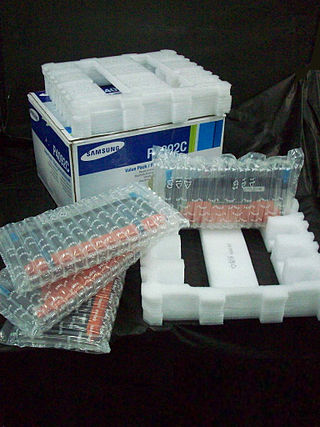
An inflatable air cushion is a bag of fabric or plastic that can be inflated to provide cushioning. Unlike bubble wrap, inflatable air cushions have a check valve to allow the cushion to be inflated or sometimes deflated.

Bubble Wrap is a trademarked brand of Sealed Air Corporation that includes numerous cushioning products made from bubble wrap. The brand is produced by the Product Care division of Sealed Air. Both the Bubble Wrap brand and product were introduced in 1960, with the launch of Sealed Air. Although the brand was originally used for the packaging of IBM computers, Sealed Air now does most of its Bubble Wrap business in the food packaging industry.

A multi-pack also known as multipack is packaging that combines or holds multiple items or smaller packages.

Currency packaging includes several forms of packing cash for easy handling and counting. Many systems use standard color-coding or are marked to indicate the amount in the package.
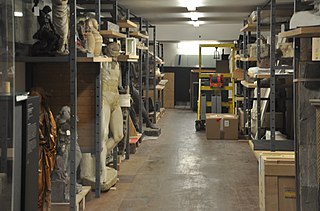
The cultural property storage typically falls to the responsibility of cultural heritage institutions, or individuals. The proper storage of these objects can help to ensure a longer lifespan for the object with minimal damage or degradation. With so many different types of artifacts, materials, and combinations of materials, keepers of these artifacts often have considerable knowledge of the best practices in storing these objects to preserve their original state.

Packaging waste, the part of the waste that consists of packaging and packaging material, is a major part of the total global waste, and the major part of the packaging waste consists of single-use plastic food packaging, a hallmark of throwaway culture. Notable examples for which the need for regulation was recognized early, are "containers of liquids for human consumption", i.e. plastic bottles and the like. In Europe, the Germans top the list of packaging waste producers with more than 220 kilos of packaging per capita.
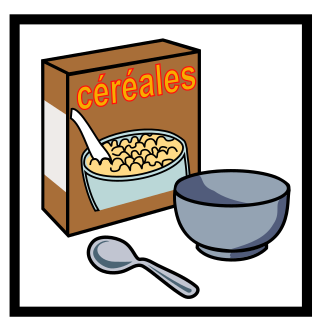
Overpackaging is the use of excess packaging. The Institute of Packaging Professionals defines overpackaging as “a condition where the methods and materials used to package an item exceed the requirements for adequate containment, protection, transport, and sale”
